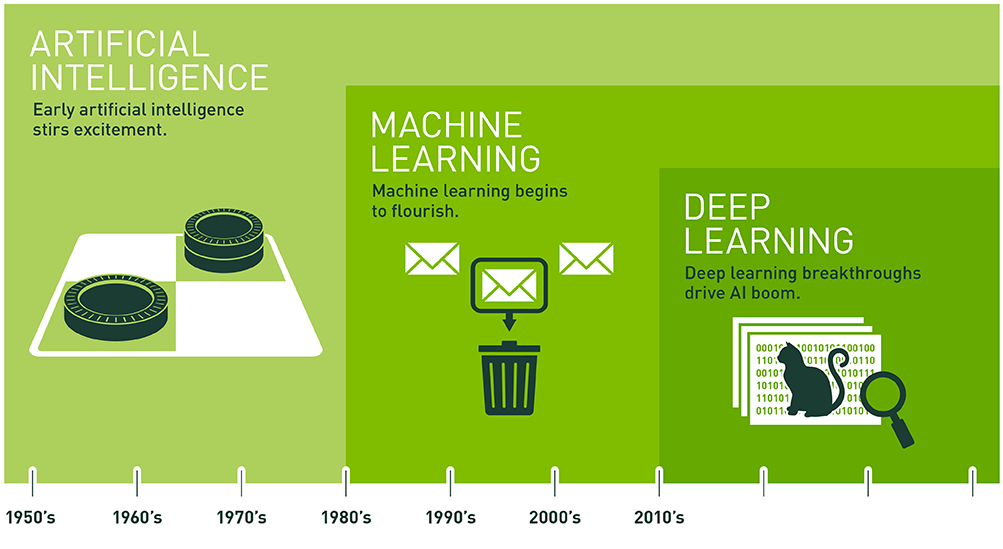
What’s the difference between artificial intelligence (AI), machine learning, and deep learning?
The terms artificial intelligence (AI), machine learning, and deep learning are increasingly being used, but unfortunately often incorrectly or in a haphazard way.
Do you know what these terms really mean, and the differences between them? An article in TechRepublic provides a good overview:
- Artificial Intelligence (AI) is the broadest way to think about advanced, computer intelligence. It can refer to anything from a computer program playing a game of chess to a voice-recognition system interpreting and responding to speech. There are three broad AI groups: Narrow AI, artificial general intelligence (AGI), and superintelligent AI. Examples of narrow AI include IBM Deep Blue, which beat chess grand master Garry Kasparov in 1996, and Google DeepMind AlphaGo, which beat Lee Sedol at Go in 2016.
- Machine learning is one subfield of AI where machines take data and “learn” for themselves, unlike software programs that are hand-coded with specific instructions for task completion. Machine learning systems can quickly apply knowledge and training from large data sets to excel at a range of tasks including facial recognition, speech recognition, object recognition, and translation. Continuing with the Deep Blue and DeepMind examples, Deep Blue was rule-based and dependent on programming so not a form of machine learning, but DeepMind is because it trained itself on a large dataset of expert moves.
- Deep learning is a subset of machine learning that solves real-world problems by tapping into neural networks that simulate human decision-making. Deep learning requires massive datasets to train itself on because there are a huge number of parameters that need to be understood by a learning algorithm, which can initially produce a lot of false-positives. For example, it would take a very massive dataset of images for a deep learning algorithm to understand the very minor details that distinguish a cat from a cheetah, panther, or fox. DeepMind is an example of deep learning.
The relationship between artificial intelligence, machine learning, and deep learning is illustrated in the image above from an NVIDIA blog article. As that article states, while deep learning and machine learning are progressively smaller subsets of artificial intelligence (AI), they have created larger disruptions:
Deep Learning has enabled many practical applications of Machine Learning and by extension the overall field of AI. Deep Learning breaks down tasks in ways that makes all kinds of machine assists seem possible, even likely. Driverless cars, better preventive healthcare, even better movie recommendations, are all here today or on the horizon. AI is the present and the future. With Deep Learning’s help, AI may even get to that science fiction state we’ve so long imagined.
Header image source: What’s the Difference Between Artificial Intelligence, Machine Learning, and Deep Learning? (NVIDIA blog article).
Also published on Medium.







Thanks for this informative article, Bruce! It cleared all my doubts regarding Ai, machine learning and deep learning.